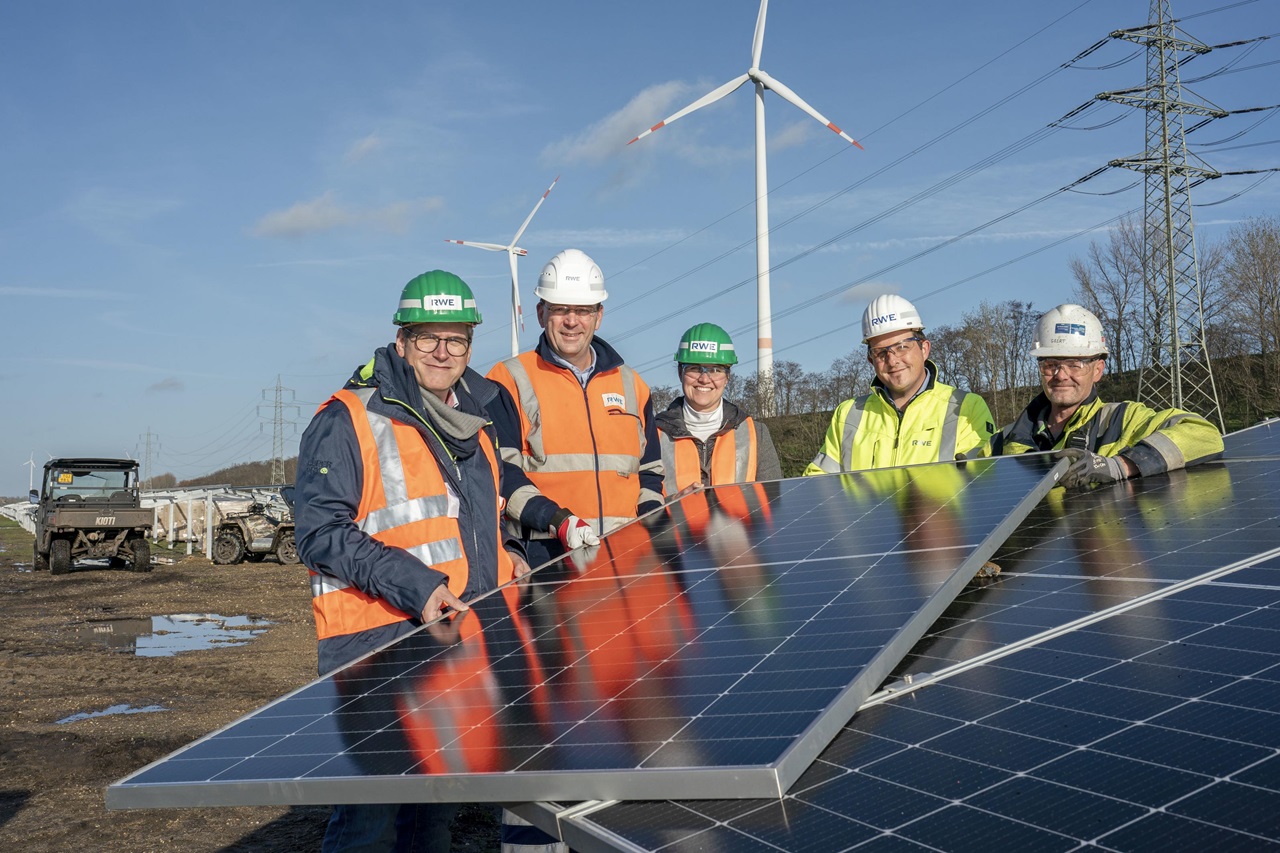RWE, Europe’s utility giant, announced last week it has commenced the construction of its maiden battery energy storage system (BESS). This project will be occur in the Netherlands. Amid a frantic race across Europe to expand renewables and exit fossil fuel plants.
It is located at RWE’s Eemshaven multi-technology hub. This is where there is biomass and gas assets alongside wind turbines. The 35MW/41MWh BESS will showcase how storage could be in use to optimize power generation. Moreover, load intermittent sources. RWE’s simulation of future virtual BESS integration is scheduled to be completed in 2025. This is through the 800MW OranjeWind offshore wind farm. It will serve as a platform to research and test real-time coordination strategies for grid stabilization as the energy mix shifts.
They have a total investment of €25m. The project is to fulfill the RWE’s 2020 pledge; to have the first-of-their- kind battery storage units built across the firm’s European generation portfolio that would help reposition aging thermal plants to meet abundant wind and solar resources. The Netherlands targeting the inclusion of fossil-free electricity by 2050, will be able by the learnings through BESS utilization by RWE and others during the transition.
Building RWE Battery Energy Storage System in the Netherlands by 2030
Netherlands must build battery banks significantly by 2030. Moreover, they must quickly increase the current capacity of around 100MW to 9GW. Nevertheless market uncertainty has rolled the advance on its wheels. Consequently, both multi-megawatt BESS start-ups are by local actor Semper Power.
They operate probably as the only independent households-based firm. They declared issues in constructing appropriate incentive schemes. Thus, permitting delays of up to 2 years and concerns over state vs utility participation models. The pilot system by RWE battery energy storage system marked the market entrance with a potential of 35 MW, acting as a catalyst. Through showing up a legitimate with-revenue of its own fossil fuel generators, the Germany’s based company may make it’s competitors follow their lead.
Through that component, a schedule-based implementation by end of 2023, Eemshaven BESS would serve as a seeding effect on the sector maturity, thus clearer regulations and standardized contracts to grasp the Netherlands’ great offshore wind achievable offshore wind potential. Being profitable is advantageous not only for RWE, but also for the rest of the EU, which helps to strengthen Europe’s energy storage position.

Role of RWE Battery Energy Storage System
Localized innovation is the key of RWE’s hub connecting offshore wind, biomass, gas and currently a 35MW BESS. The BESS will be personified as a hub and will give energy demand in each moment without expensive output adjustments. The 41MWh system will be equipped with complex artificial intelligence algorithms. These algorithms will be able to charge and send the power directly out of zone automatically without any human interference. Thus, it is the fastest way to stabilize and the ramping up or down is possible for the thermal power stations.
The BESS installed in the site will enable RWE to maintain a balance of the high variability. This variability is from the renewables at an optimum level. Thus, contributing to operating the legacy gas assets in full capacity with the help of the optimal machine state preserving. The pilot aims to demonstrate that the disposal site operates reliably and responsibly throughout the commissioning in 2023.
This positions the project to improve RWE’s acceptance to retire some carbon-intensive power plants by 2030. Besides the lessons need, they should also feed into the integration roadmaps for each thermal plant in RWE flotilla to assist the company in reaching its goal of carbon neutrality by 2040. Instead of proving the business case why existing infrastructure is suitable for green energy, it could be faster yet to adopt storage across mainland Europe’s power system.
This expansion of RWE into energy storage also coincides with a fast-paced infrastructure development. It contains other European countries with other projects for battery storage. Especially as they are seeking to decommission coal plants by 2050. As in the literal sense of this very day, Sweden gave over $100 million in incentives and subsidies. Hence, to support building 4GW of new storage projects by 2030.
As part of the aggressive move to end the grid dependencies on fossil fuels. They aim to power it entirely with renewables. In the beginning of the 2020s the intensification of the carbon emissions limits and the gas industry collapsed. European countries saw the storage batteries investment of above $10 billion in 2022.
Nevertheless, the showcase of nearby Vattenfall`s offshore wind in the Netherlands alone is a proof of concept. Their goal is zero carbon emissions throughout the domestic market by 2050. Moving towards a degasification of the market, a major burden is put on to the expansion of sector-wide energy storage implementation in order to meet the unpredictable patterns of wind and solar energy. Through doing so, RWE benefits with the beautification of getting acquainted with synergies in a smooth transition from its existing resources to the new renewables. Findings from accomplished pilot RWE’s 2023 will recommend what traditional operators are to do, leave reliability today with the ending intent of full de-carbonization by mid-century there on.

